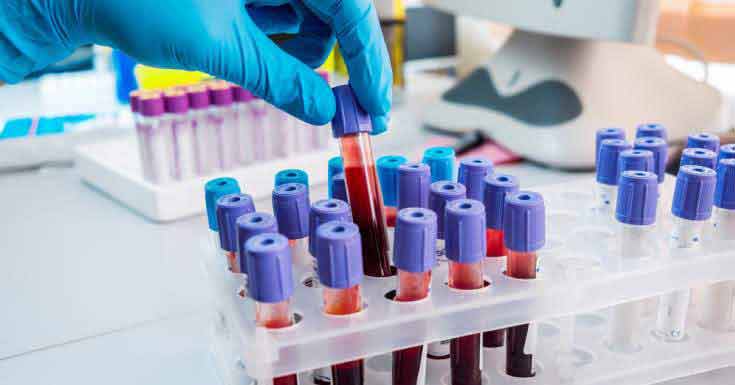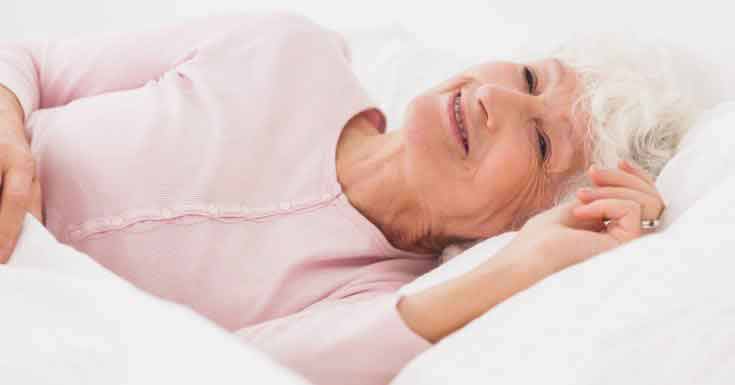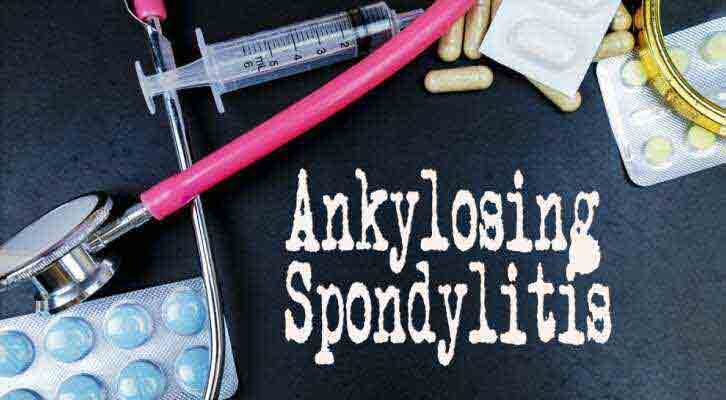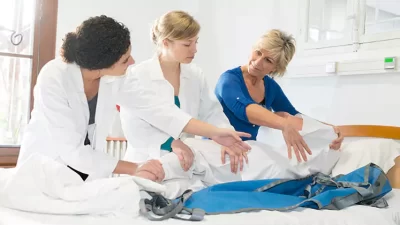Ankylosing spondylitis is also known as Bechterew’s disease and goes by the abbreviation of AS. It has the tendency to cause inflammation of the spine and sacroiliac joints, which is a type of arthritis that produces pain and stiffness all the way from the neck down to the lower back.
And over time, the vertebrae, which is the joints and bones, may grow together and not have movement and lose the ability to bend. This also could affect the hips, knees and shoulders as well. So, technically it’s an inflammatory arthritis that requires medical diagnosis and could last for years or a lifetime.
It affects more than 200,000 people in the U.S. per year and more common in men. The signs could show up in early adulthood and can produce pain in the back and joints along with reduced movement in the spine, which results in the term hunched-forward posture.
Women will show signs in the joints that are away from the spine. Children also can be affected, which is known as juvenile ankylosing spondylitis and could occur in their hips, heels, or knees and progress to the spine. Because it reflects a sign of lower back pain, it can sometimes be incorrectly attributed to athletic injuries in children.
If diagnosed early on, it could control the pain symptoms, stiffness and minimize or prevent deformity.
It is also been categorized as a systemic and rheumatic disease that can affect the tissues throughout the entire body, which can move inflammation to other organs, such as the heart, kidneys, lungs and eyes.
What are the symptoms of ankylosing spondylitis? There are many early symptoms, but the first sign would be experiencing inflammation in the pelvis area or toward the lower spine and most known to occur as early as 17. It is really rare to see symptoms occur earlier than 17.
The Following Are The Most Common Early Symptoms:

- Constant or chronic pain and feeling very stiff in the buttocks, hips and lower back region, which could go on for more than 3 months. It can become worse during inactive times, but improve with flexibility or exercise.
- The back pain could occur more during the night or early am hours along with feeling stiff in the morning.
- Tendonitis may affect stiffness and pain toward the Achilles tendon, which is at the back of the ankle or experience it under the heel. There could also be some pain around the ligaments as well.
- It can impair one’s ability to do routine tasks, which occurs through an overgrowth of the bones, which is called “Bony fusion” and can lead to an irregular joining of the bones and in some cases, it can restrict flexibility of the chest and make is harder to breathe.
- May show signs of fatigue, loss of appetite, fever or even eye inflammation, but it is rare for lung and heart problems to occur.
- Some may experience chronic inflammation throughout the spine which can develop a complete bony fusion and once it is fused, the pain will subside but the person will have a complete loss of flexibility in the spine. The fused spines are vulnerable to fractures when involved in a car accident through experiencing trauma affects and most common in the lower neck. A bone breakage could show early signs from a sudden burst of pain and movement in the spinal region.
- There could be signs of inflammation in the lungs that leads to coughing and hard to breathe, especially with infections and exercise.

In rare cases, AS can cause the heart rate to slow down and may require a pacemaker to maintain the heart flow.
Some have experienced that the aorta, which is closest to the heart, having a leakage of the aortic valve and inflammation along with slow breathing, light headedness and could lead the heart to not function correctly.
In advanced AS cases, it can lead to amyloid going into the kidneys, which is protein deposits and could lead to loss of the kidneys.
AS affects about 0.5% worldwide and it is found that up to 10% of those who have a family link carried by a gene called HLA-B27 have no signs of the condition, but it is still noted that people having this gene are more susceptible to augment AS.
The gene is detected through blood tests. There are two other genes that affect the immune system called ARTS1 and IL23R. Medical researchers continue to study these genes and are making huge strides to finding a cure for AS.
Researchers are also reviewing how the inflammation happens and develops in different organs and joints and why it affects people with AS.
The following are several symptoms that you should be aware of if you are experiencing any pain in the lower region of your back:
- Throbbing or severe pain
- Sluggish ache
- Soreness
- Muscle cramp
- Prickling sensation
- Discomfort from flexibility of the spine
- Sciatic along with severe pain throughout one or both lower extremities
- Lack of control of continence of the bowel or bladder
Key Factors To The Diagnosis Of Ankylosing Spondylitis

- Blood tests could indicate a genetic marker. One more inclusive blood test called the sedimentation rate is a comprehensive marker that is often elevated through an inflammatory response such as AS.C-Reactive protein test may also be ordered as part of the review.
- Review of symptoms, along with analysis of the back and pelvis X-rays, of which could reflect abnormalities of the spine.
- Measurement documentation of the chest through breathing.
- Urinalysis is completed to exclude kidney conditions and any abnormalities that may influence back pain similar to AS.
- Physical exam could show the slow range of movement in the joints and signs of the inflammation, along with examining the eyes for inflammation as well.
Few Key Factors Where AS May Be The Indicator Of The Inflammatory Back Pain:
- Restless sleep
- Rest does not help the symptoms
- Experiencing stiffness in the am, but subsides with movement
- Having back pain occur before age 40 and not as part of any other impairment
- It has occurred for a period longer than 3 months
Researchers indicated in some cases that it can be years before AS is diagnosed and no cure has been established at this time.
Several Ways That Ankylosing Spondylitis Can Be Alleviated With Treatment Are:
- Exercise – Setting a daily regimen to continue the movement of the joints will reduce the risk of disability and help alleviate the stiffness. One of the best exercises is swimming. By doing additional exercises with deeper breaths will keep the chest case versatile.
- Physical therapy will aid in reducing deformity and maintaining mobility.
- Apply heat or warm shower will help alleviate the pain and joint resistance that may occur in the morning.
- The doctor may prescribe disease-modifying ant rheumatic drugs, in addition to NSAIDs to help reduce the pain and inflammation but that would be in moderate to severe cases. Generally, NSAIDs alleviate the pain and pressure in the joints. Cymbalta helps with chronic pain, and has been FDA approved as well as steroid injections is another helpful treatment.
- Surgery to replace the joint may be another option affecting the hips and knee region for those with advanced joint disease.
There Are Ways To Improve AS Just By Simple Changes In Your Life:

- Adjusting to a firm mattress while lying with your back straight will alleviate some pressure. Keep in mind to not have large pillows under your head and neck to avoid neck fusion and not elevating your legs so that you don’t incur hip or knee fusion. Choose areas that don’t put you in a slouching positions and best to use chairs with arms to give you additional support.
- Discontinue smoking or chew any tobacco products as it has been known to increase symptoms. Those who currently smoke with AS have additional damage to the spine vs. those who didn’t smoke with the same level of disease activity. This includes a higher risk of heart disease and stroke.
- Avoid doing any jumping or movement that may feel like falling as those with AS can easily hurt their necks or back.
Read More: Arthritis In Neck – You Should Know Its Symptoms Causes & Treatment
Conclusion
While there is no prevention, cure and once it has occurred it can’t be reversed. There are several ways to alleviate symptoms and still maintain a comfortable life, while living with AS.
The best way to manage the progression is to continue doctor visits for close monitoring and continue daily exercise to maintain flexibility.
As always consult your health professional. I hope this article finds you in good health.
Feature Image: Shutterstock.com
In-Post Image: Shutterstock.com & healthline.com







 This article changed my life!
This article changed my life! This article was informative.
This article was informative. I have a medical question.
I have a medical question.
 This article contains incorrect information.
This article contains incorrect information. This article doesn’t have the information I’m looking for.
This article doesn’t have the information I’m looking for.